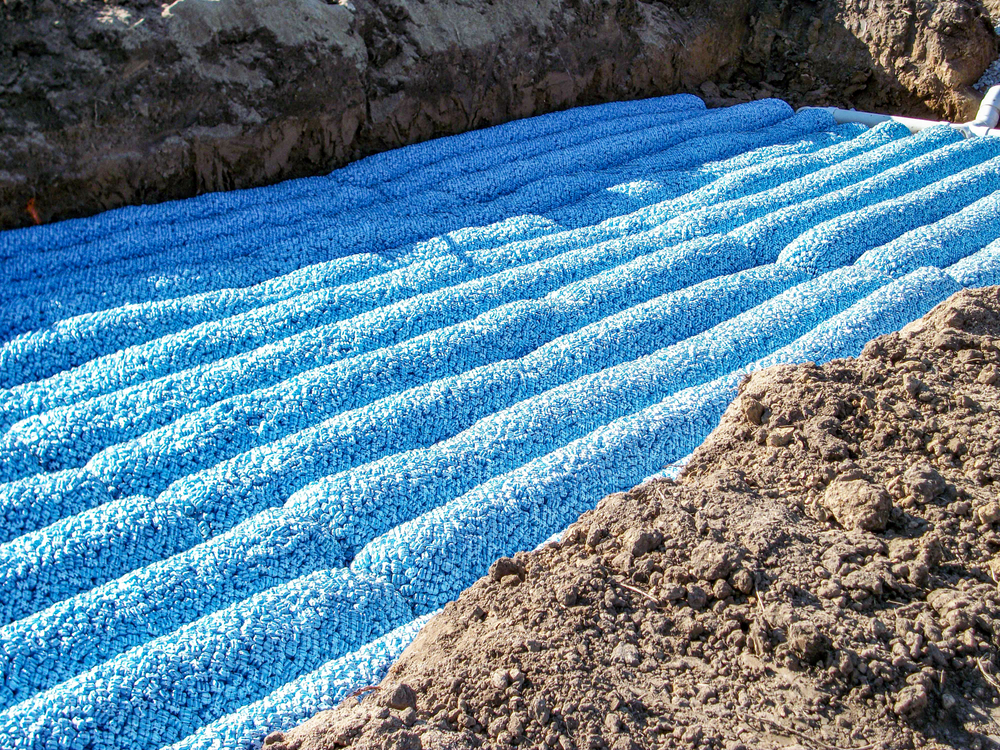Install A Septic System for the First Time: What Is A Drain Filed?

When you’re installing a septic system for the first time, you might come across terms like “septic tank” and “drain field.” While most people understand the basic concept of a septic tank, the drain field can sometimes be a bit more complicated. If you’re new to septic systems, understanding what a drain field is and how it works is crucial for ensuring the longevity and efficiency of your system. In this blog, we’ll explore the role of the drain field in a septic system, what happens during its installation, and how to properly maintain it.
The Basics of Septic Systems
Before diving into the specifics of drain fields, it’s important to understand how a septic system works as a whole. Septic systems are designed to manage and treat wastewater from your home in an environmentally friendly way. Wastewater from your toilets, sinks, showers, and other plumbing fixtures flows into the septic tank, where solids and liquids are separated. The solids settle at the bottom, while the liquids are sent to the drain field for further treatment.
The primary purpose of a septic tank is to provide a place where waste can be temporarily stored and processed. However, it is the drain field (also called a leach field) that plays a pivotal role in the final stages of the treatment process. This component works by filtering out contaminants from the liquid wastewater before it is released back into the environment.
What Is a Drain Field?
The drain field, sometimes referred to as a leach field, is the part of the septic system where the treated effluent (liquid waste) is released into the soil. After wastewater leaves the septic tank, it flows through a series of pipes into the drain field. These pipes are laid out in trenches or beds, often filled with gravel or other permeable materials. The purpose of the drain field is to allow the liquid waste to be filtered by the soil, which helps remove harmful bacteria, viruses, and other contaminants.
The soil in the drain field acts as a natural filter, helping to purify the wastewater before it re-enters the groundwater supply or is absorbed into the surrounding environment. The key to the success of a drain field lies in the proper distribution of effluent and the permeability of the soil. If the system is properly installed and maintained, the drain field can effectively treat wastewater without negatively impacting the environment or posing health risks.
The Installation Process of a Drain Field
Installing a drain field is a crucial part of setting up a septic system. The process involves a series of steps, and the location, size, and design of the drain field must be carefully planned to ensure that the system functions efficiently. Here are the key factors involved in the installation of a drain field:
-
Site Evaluation: Before installing the drain field, a site evaluation must be performed. This involves assessing the soil type, the size of the property, and the location of the septic tank. The soil should be able to absorb the effluent without becoming saturated, which could lead to system failure. The distance between the drain field and other structures, like wells or water bodies, must also be considered to prevent contamination.
-
Design: Based on the site evaluation, a septic professional will design the drain field. This design includes determining the size of the area needed for the drain field and how many trenches or beds will be required. The design will also account for the type of soil and its ability to filter wastewater. In some cases, alternative drain field designs, such as mound systems or drip distribution systems, may be necessary if the soil conditions are not ideal.
-
Excavation: Once the design is finalized, excavation begins. Trenches or beds are dug to the appropriate depth to accommodate the pipes and gravel. The depth and width of these trenches are determined by the system design, as well as the soil conditions. The goal is to create a system that allows for proper effluent distribution and efficient filtration.
-
Piping and Gravel Installation: After the trenches are dug, perforated pipes are placed in the trenches, and gravel or other porous materials are used to surround the pipes. The gravel allows the effluent to flow evenly through the pipes and into the surrounding soil. A layer of soil is then placed over the gravel to protect the system and ensure that the effluent is evenly distributed.
-
Inspection and Final Touches: Once the drain field is installed, it must be inspected by a local authority or septic system professional to ensure that it meets all local regulations. After passing inspection, the area is backfilled, and the ground is leveled. Grass or other vegetation may be planted to prevent erosion and to help maintain the integrity of the system.
Why Proper Drain Field Maintenance Is Essential
Like any part of your septic system, the drain field requires regular maintenance to ensure that it continues to function properly. Improper maintenance can lead to system failure, which can result in costly repairs and potential environmental contamination. Here are a few key maintenance tips to help prolong the life of your drain field:
-
Avoid Overloading the System: One of the most common causes of drain field problems is overloading. If you send too much wastewater into the system too quickly, the drain field may become overwhelmed, leading to poor filtration and potential clogging. Be mindful of your water usage, and avoid putting excessive waste into the system.
-
Regular Septic Tank Pumping: The septic tank should be pumped out regularly to remove solid waste buildup. If solids build up too much in the tank, they can overflow into the drain field, causing blockages and inefficient treatment. Pumping your septic tank every three to five years is generally recommended, depending on the size of your household and the size of your septic system.
-
Avoid Harsh Chemicals: Pouring harsh chemicals down your drains can harm the beneficial bacteria in your septic system, which are responsible for breaking down waste in the septic tank. Over time, this can lead to a decrease in system performance. Use septic-safe cleaning products whenever possible.
-
Keep Heavy Traffic Away from the Drain Field: The area above the drain field should be kept free of heavy traffic, including vehicles and large equipment. Excessive weight on the soil can compact it, making it less permeable and reducing the effectiveness of the filtration process.
-
Monitor for Signs of Trouble: Be on the lookout for any signs of drain field problems, such as unpleasant odors, wet spots on the lawn, or slow drainage. If you notice any of these symptoms, it could be a sign that the drain field is malfunctioning, and you should contact a professional for an inspection.
Conclusion
A drain field plays a crucial role in the proper functioning of a septic system. As the final line of defense against wastewater contamination, the drain field helps ensure that effluent is safely filtered and reintroduced into the environment. Understanding the purpose of a drain field, the installation process, and how to maintain it can save you time, money, and frustration in the long run. By taking proper care of your septic system and paying attention to the needs of your drain field, you can enjoy years of effective wastewater treatment without major issues.
Need Well-Drilling Contractors in Brooksville, FL?
Advanced Pump & Well Service is your leading well and pump specialists in the Tampa Bay are since 1956. With 24-hour emergency service, as well as regularly scheduled maintenance calls, Advanced Pump & Well Service is here for anything you could need. We specialize in many different areas; from jet pumps and submersible well service to water well tanks, pool pumps, and water filtration systems, we’re experts in it all. We service all makes and models of wells and pumps, so there is no issue that we cannot resolve. We are proud to provide reliable 24-hour service to central Florida, so do not hesitate to give us a call or visit us online.
Categorised in: Septic Systems
